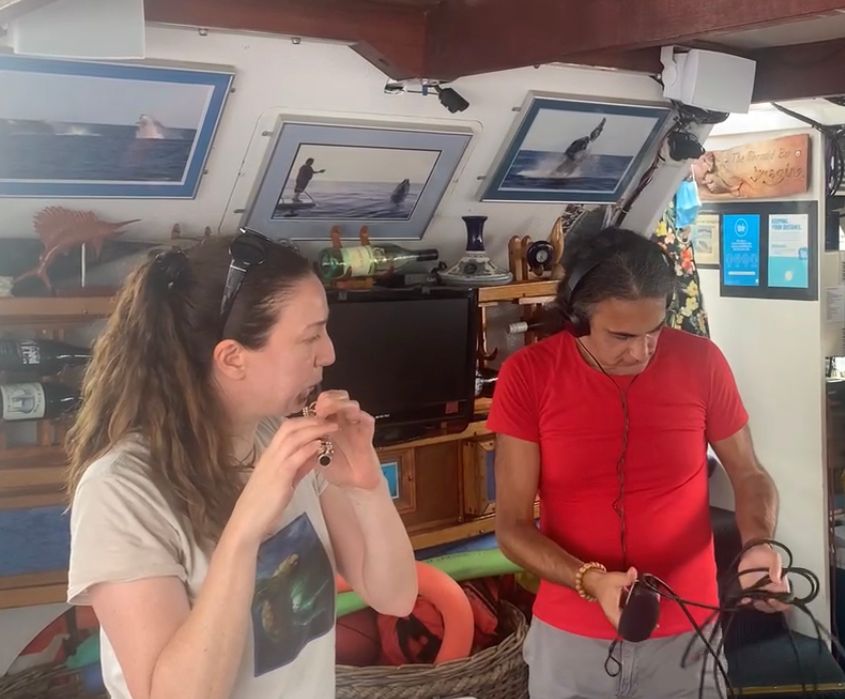According to Greek legend, dolphins saved the poet Arion from pirates when they heard him sing. Now, Australian National University (ANU) research suggests music could let humans communicate with dolphins and learn more about these naturally curious creatures.

Dolphins are attracted to the high-pitched frequencies of the flute, piccolo, and the Indian wooden recorder, and to high-pitched singing, an ANU-led experiment conducted in Port Stephens, NSW, aboard the Imagine Eco Cruises boat in December revealed.
Flautist Sally Walker, from the ANU School of Music, began to play her flute, and “within minutes”, a pod of bottlenose dolphins approached the boat.
“One dolphin glided directly underneath me at the same speed as the boat, and the rest of the pod danced around it,” she said.
“High frequencies and particular intervallic distances between notes seemed to draw the dolphins in and excite them.
“Staff of the Imagine boat said that we had seen an unusually large number of dolphins both in the port and out to sea.”
The sounds of the dolphins were recorded using a hydrophone (an underwater microphone), and can be heard here.
Dolphin expert Dr Olivia De Bergerac has researched the interaction between dolphins and humans for more than 25 years, but said little was known about how dolphins react and respond to live music.
“Dolphins live in a world of sounds,” she said. “They communicate with one another by sending a sound which is a hologram of information reflected in their melon – a mass of adipose tissue found in their forehead – so I know we as humans can communicate with dolphins through music.
“Dolphins are highly intelligent creatures, and can sense our thoughts, feelings, and state of being, and send us sounds to heal us.”
Professor Kim Cunio, Head of the ANU School of Music, said: “The effect of listening to water teeming with life with the aid of a hydrophone is quite exciting.
“Sound travels through water in a very different manner to air, particularly low frequencies, but the dolphin frequencies are very high.
“This means that we are not easily hearing the nuance in their calls.”
The flute, piccolo, and coloratura voice are some of the highest instruments, and well above human speech, Professor Cunio said.
The researchers will use the hydrophone to directly interact with the dolphins, and see what kind of sounds they are most receptive to.
They will play their music via an underwater speaker to test whether it influences how the dolphins interact with and respond to music and the musicians, compared to the musicians performing above water.
“For example, do they respond differently to structured music like a Bach sonata?” Ms Walker said.
“Or perhaps more soothing sounds similar to what you would hear on soundtracks designed for meditation.
“Maybe they’re simply attracted to the novelty of someone standing on the bow of a boat and serenading them.”
A video in which dolphins can be seen approaching the boat and interacting with the music can be viewed here.
Get all the latest Canberra news, sport, entertainment, lifestyle, competitions and more delivered straight to your inbox with the Canberra Daily Daily Newsletter. Sign up here.



